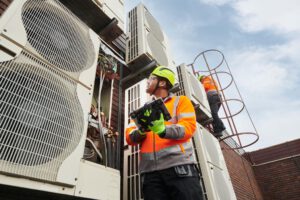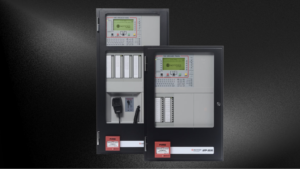Malaysia’s rapid urbanisation has ushered in a new era of architectural marvels and urban landscapes. As cities expand vertically and horizontally, ensuring the safety and well-being of inhabitants becomes a paramount concern. One pivotal aspect of achieving comprehensive urban safety is the seamless integration of fire alarm systems into the fabric of urban planning in Malaysia. Delve into the critical importance of fusing fire safety measures with urban development strategies with fire alarm system in Malaysia.
Understanding the Urban Challenge
As Malaysia undergoes unprecedented urban growth, the complexities of designing safe and resilient urban spaces intensify. High-rise buildings, sprawling complexes, and intricate infrastructural networks characterise modern urban environments. In this dynamic setting, the integration of fire alarm systems into the early stages of urban planning is essential to address the unique challenges posed by the evolving cityscape.
Regulatory Framework
To harmonise fire safety with urban development, it is imperative to begin with a solid understanding of the regulatory framework governing building standards and fire safety in Malaysia. The Uniform Building By-Laws (UBBL) and the Fire Services Act provide the foundation for legal requirements related to fire safety. Integrating fire alarm systems into urban planning ensures compliance with these regulations from the inception of a project, setting the stage for a safer and more resilient urban environment.
Strategic Placement and Zoning of Fire Alarm System in Malaysia
Effective urban planning involves strategic placement and zoning to optimise safety measures. Fire alarm systems should be strategically located to cover high-risk areas and critical points of egress. Zoning, dividing urban spaces into manageable sections, allows for tailored alert systems and efficient emergency responses. This approach facilitates the localization of fire incidents and streamlines evacuation procedures, mitigating potential chaos during emergencies.

Advanced Detection Technologies
Incorporating advanced detection technologies is vital to enhancing the efficacy of fire alarm systems in urban settings. Modern sensors, including smoke detectors, heat detectors, and flame detectors, should be seamlessly integrated into building infrastructure during the planning phase. Intelligent detection systems employing artificial intelligence and data analytics can analyse environmental conditions in real-time, providing early warnings and reducing the risk of false alarms.
Urban Density and Evacuation Planning
Urban density, a characteristic feature of rapidly growing cities, necessitates meticulous evacuation planning. Fire alarm systems integrated into urban planning should consider the density of populations and structures, influencing the design of evacuation routes, assembly points, and emergency exits. Additionally, employing technologies such as smart evacuation systems and real-time communication platforms can enhance the efficiency of mass evacuations, ensuring the safety of urban communities.
Building System Integration
Modern urban buildings are complex ecosystems with interconnected systems governing various functions. Integrating fire alarm systems with other building systems, such as HVAC, access control, and emergency lighting, creates a cohesive safety network. For instance, a fire alarm triggering the HVAC system to manage smoke or initiating the automatic shutdown of elevators during emergencies illustrates the potential synergy between fire safety and broader building functionality.
Infrastructure Resilience
Urban planning should prioritise the resilience of critical infrastructure in the face of fire incidents. Designing fire-resistant materials, incorporating firebreaks, and implementing redundant systems within the urban fabric contribute to enhanced infrastructure resilience. Integrating fire alarm systems into this comprehensive approach ensures that the built environment can withstand and respond effectively to fire emergencies, minimising potential damage and loss.
Public Awareness and Education
Effective urban planning extends beyond physical structures to encompass public awareness and education. Integrating fire safety education campaigns into the planning process fosters a culture of preparedness among urban residents. Well-informed citizens are more likely to respond appropriately during emergencies, reducing panic and facilitating smoother evacuations. Public awareness initiatives complement fire alarm systems, creating a synergistic approach to urban safety.
Technological Advancements and Smart Cities
Embracing technological advancements is pivotal in crafting smart and safe cities. The integration of fire alarm systems into urban planning aligns with the concept of smart cities, where data-driven technologies contribute to efficient governance. Smart fire alarm systems can provide real-time data to emergency services, enabling faster responses and more effective incident management in urban environments.

Integrate Fire Alarm System Into Urban Planning with SCA Malaysia
Integrating fire alarm systems into the tapestry of urban planning in Malaysia is not merely a safety measure; it is an essential component of responsible and forward-thinking urban development. By considering regulatory compliance, strategic placement, advanced detection technologies, urban density, building system integration, infrastructure resilience, public awareness, and technological advancements, stakeholders can create urban spaces that prioritise the safety and well-being of their inhabitants. As Malaysia continues to evolve into a modern and vibrant urban landscape, SCA Malaysia’s integration of fire alarm systems with products from renowned brands such as NOTIFIER by Honeywell ensures that progress is not only measured in architectural achievements but also in the safeguarding of lives and the creation of resilient, smart, and secure urban environments. Integrate fire alarm system into urban planning with SCA Malaysia and browse through our brands today!






